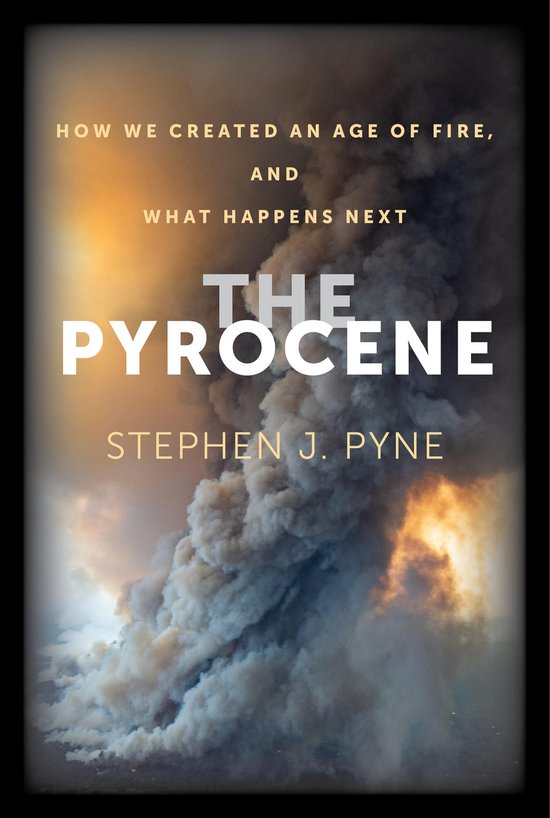
The Pyrocene
" The Pyrocene is a lambent meditation on the many meanings of fire: geological, environmental, agricultural, nutritional, metallurgical, metaphorical. Pyne makes the illuminating case that fire, our first domesticated beast, tamed and suppressed for much of the industrial age, is now re-wilding itself."—Marcia Bjornerud, author of Timefulness
"A master class in pyrogeographic thinking. It sears into the consciousness the inescapable entwinement of life, fire, and culture."—David M. J. S. Bowman, Professor, University of Tasmania, Australia
"With The Pyrocene, Pyne redefines the Anthropocene as an age of fire, envisioning a renewal of our diverse relationships with fire as the path to a better future for people and the rest of nature."—Erle C. Ellis, author of Anthropocene: A Very Short Introduction
"Pyne is the pyro-poet of our time. We are the fire species and this is our story. This book represents a lifetime of observing the flame in all corners and cultures. It is a beautiful narrative that is deeply relevant and provides critical reflection on how we live sustainably on our fire planet."—Jennifer K. Balch, Director of Earth Lab, University of Colorado Boulder
"A wonderful, insightful book. I highly recommend it, first to those dealing directly with wildfires, second to policy makers, and finally to every citizen because we need to know about our transition into the Pyrocene era, or we will become the frog in the boiling pot."—Patrick Shea, former National Director of the US Bureau of Land Management
"Fire is one of the important climate issues of our day. In his masterful book, Pyne, the doyen of fire history, takes us on a journey from our near past through the present and into the future. Pyne provides us with the data and tools to help us understand fire on Earth, the role it plays, our interactions with it, and the threat it may pose. This is a book that should not be ignored but read by all interested in the world about them, as well as importantly by educators and policy makers"—Andrew C. Scott, author of Fire: A Very Short Introduction
A provocative rethinking of how humans and fire have evolved together over time—and our responsibility to reorient this relationship before it's too late.
The Pyrocene tells the story of what happened when a fire-wielding species, humanity, met an especially fire-receptive time in Earth's history. Since terrestrial life first appeared, flames have flourished. Over the past two million years, however, one genus gained the ability to manipulate fire, swiftly remaking both itself and eventually the world. We developed small guts and big heads by cooking food; we climbed the food chain by cooking landscapes; and now we have become a geologic force by cooking the planet.
Some fire uses have been direct: fire applied to convert living landscapes into hunting grounds, forage fields, farms, and pastures. Others have been indirect, through pyrotechnologies that expanded humanity's reach beyond flame's grasp. Still, preindustrial and Indigenous societies largely operated within broad ecological constraints that determined how, and when, living landscapes could be burned. These ancient relationships between humans and fire broke down when people began to burn fossil biomass—lithic landscapes—and humanity's firepower became unbounded. Fire-catalyzed climate change globalized the impacts into a new geologic epoch. The Pleistocene yielded to the Pyrocene.
Around fires, across millennia, we have told stories that explained the world and negotiated our place within it. The Pyrocene continues that tradition, describing how we have remade the Earth and how we might recover our responsibilities as keepers of the planetary flame.
| Auteur | | Stephen J. Pyne |
| Taal | | Engels |
| Type | | Hardcover |
| Categorie | | Wetenschap & Natuur |